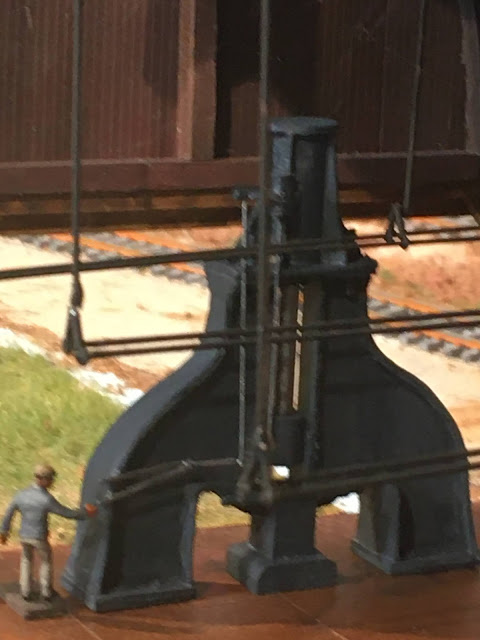About one month ago, Bernie Kempinski posted a suggestion / challenge for a group build of a box / freight car. The purpose is to generate activity and motivation for those who have wanted or perhaps have stalled on a project. It also can inform members and viewers as to the possibilities to increase your railroad fleet. I chose to scratch build the Adams Express car. As far as we know, there are only two ACW era photos. Interesting in that there are three different types reveled in these images shown below...
This first image, taken in Nashville, has long side openings and an exterior door. The truck side frames are unique in that they are braced with two vertical beams to accommodate heavy loads. One can assume that the color was on the lighter side since the lettering and numbers are dark. A cool modeling detail is the calk marks on the sides. Although they could be considered graffiti today, these were either instructions or notations for the handlers.
This next image shows two Adams cars photographed in Chattanooga, circa 1864...On the left, a distinct difference from the above is that the door runs on the inside and has a curved roof versus peaked. And seeing white lettering, most likely the color is quite dark. Looking at a photo I took at the Sacramento Museum, it could be a bluish green, seen below this photo.
Back to the Nashville photo, the Adams car to the right has other differences which include a shorter height, a boarded up window and what appears to be an even lighter color with dark lettering.
Here is a sequence of photos of my partially completed version of the car in the Chattanooga photo...
Siding is Northwestern scale lumber, 1/8" scribed siding, but the planks are too wide. I would use the more prototypical 1/16" for others. The roof is card stock and scored to illustrate a metal roof. I will add Panamint HOT82sACW 3D printed trucks and InterMountain metal wheels. I used metal crate castings for weights and have one door open to see in. Look close and there is a waybill attached to one of the crates. On the other end is a 1/4 oz. weight to bring the total weight to about 46 grams. Alexander link and pin couplers are also attached. Grab irons are Detail West .019 brass wire. Grandt Line #5101 nut/bolt castings also add to the detail. Turnbuckles are by Tichy. Queen posts I believe are Grandt Line. I found these in a drawer, to my joyful surprise, but were loose so the manufacturer is a guess. Lastly will be to create decals or cut individual letters... oh boy.






















